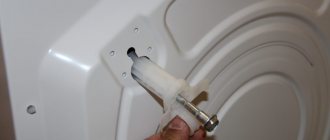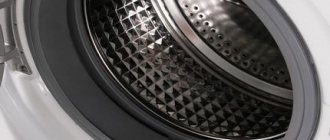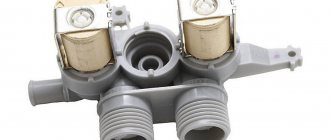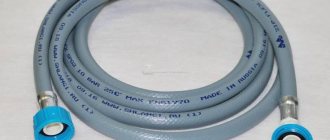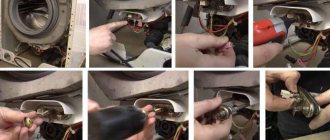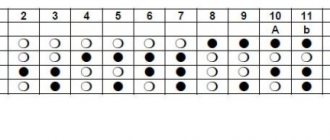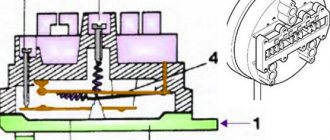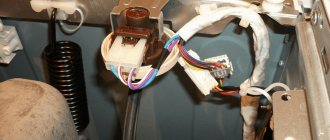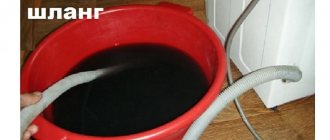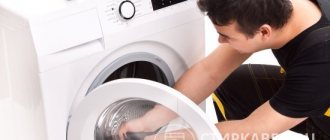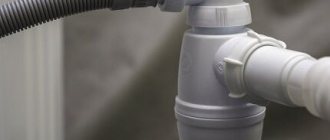The comfort of our lives is often disrupted by malfunctions of the most necessary household appliances. At times, failures occur not as a result of a breakdown of the equipment itself, but as a result of improper installation, operation, and connection to communications. Thus, washing clothes even in the best machine will be unsatisfactory if sewage and/or odors penetrate into the tank of the unit. A non-return valve for a washing machine installed on the drain helps to avoid this problem. Such a valve completely solves the issue of high-quality drainage of waste water.
What is the problem and what are its causes
Imagine: there are characteristic odors coming from the washing machine, and some clothes at the end of the wash look like they were just dropped on the floor. The “diagnosis” is obvious: sewage is clearly leaking into the washing machine. The phenomenon is called the siphon effect.
The only reason why a siphon effect occurs is the incorrect connection of the washing machine to the sewer system. Main mistakes:
- when inserting the drain hose of the machine directly into the sewer, it was not first raised to a height of 0.5 m (there are options when the hose is laid to the sewer pipe directly along the floor);
- When entering the siphon under the sink, there is no water seal.
In both cases, there is no necessary barrier between the sewer pipes and the washing machine tank. In addition to contamination of already washed clothes and unpleasant odors, there are three more unpleasant consequences: increased consumption of electricity and water during washing, as well as a noticeable increase in its duration.
In such cases, you definitely need a check valve to drain the washing machine. Installing this device effectively solves all the problems listed above.
Types of valves
Classification:
- Solid;
- Segmented;
- Mortise;
- Wall-mounted;
- Non-return valve installed in the siphon under the sink.
All devices are designed to protect against the siphon effect in the washing machine and prevent contamination of the tank. Segmented anti-siphons are used when working with dirty tap water. They are easier to disassemble and clean from debris.
A wall check valve is more expensive and is used when the drain is placed in a small space between the walls and the outer panel of the washing machine. Compact devices save space, look stylish and fit perfectly into the interior.
A mortise check valve is inserted into the drain running through the sewer. First, the drain is equipped with an insert, then the product is inserted into it.
Siphon devices are placed under the sink and are suitable for any type of plumbing fixtures.
A check valve against the siphon effect in a new washing machine is installed in the following situations:
- The machine is connected directly to the drain when the connection cannot be raised. A check valve is installed when the pipe is low.
- A standard hose configuration is connected to the washbasin drain without a check valve, since the siphon effect does not occur in such systems.
The valve protecting the drain of the washing machine can be installed independently if necessary.
Principle of operation
The idea of the device is relatively simple: an anti-siphon valve blocks the drainage coming from the sewer into the drain hose. At the same time, it does not interfere with the drainage of waste water from the washing machine. Most often this is achieved in one of two ways - using a locking ball or a spring. Accordingly, check valves are called ball (ball) or spring.
Imagine a pipe containing a ball. “Good” drains coming through the pipe, that is, from the washing machine, are able to move this ball from its place and pass into the sewer. As soon as the flow of water stops, the ball returns to its place. And in this position, it serves as an excellent barrier to sewer drains: even if they are very close to the drain hose, they will not be able to leak through the ball.
A spring-loaded anti-siphon valve operates in a similar way. Washer drainage can compress the spring and open the valve for proper drainage. When “good” drains do not flow, the spring straightens and the valve closes the lumen of the pipe. Once again, sewage will not be able to penetrate the drain hose.
Conclusion: if you install a check valve for a washing machine on the drain, then the danger of contamination and stench of washed items due to the penetration of sewage disappears.
What are the advantages?
If it has already been discovered that the washing machine is connected to the sewer incorrectly, then there are no questions here. A solution to the problem is needed, sometimes very urgently.
But there are other situations when the recommended methods of connecting the drain hose to the sewer are simply not feasible. But I don’t want to use an alternative method - securing the hose to the edge of the bathtub, sink or toilet using a holder. It is in this case that the use of a check valve becomes an ideal option.
Example: the design “drain hose + check valve + sewer pipe” can easily be placed around the bathroom. After this, all that remains is to install a special screen. This solution has one significant drawback. If you have to replace the check valve, access to it may be difficult. It is recommended to avoid this option.
How to choose a check valve?
The drain valve for a washing machine can be:
- Whole. Such a device has a durable, non-separable body and usually has the lowest price. But with hard water, the device will have to be changed approximately every three years.
- Segmental. The best choice if you are not completely sure of the quality of the water. The segment device can (and is recommended) to be periodically disassembled to clean out settled water suspensions.
- Wall (wall). This check valve is compact. An excellent option for installation behind a washing machine. Wall check valves can be quite aesthetic in their design. This makes them suitable for cases where the device is to be installed in plain sight, and at the same time relatively expensive.
- Mortise. Such a water drain valve in the washing machine will be required if the hose is to be connected directly to the sewer pipe.
- Built into a special sink siphon. The main requirement is that the distance from the washing machine to the sink should not exceed one and a half meters. A washing machine siphon with a check valve is quite affordable, but there are potential inconveniences. When the washing machine drains, it may be difficult to use the sink at the same time. Especially with the general poor condition of the sewer system.
The materials for the manufacture of the anti-siphon valve are most often polypropylene and metal (including subsequent chrome plating). Among producing countries, Italian models from and “Merloni” have proven themselves to be the best (they can be quite expensive). Budget option - Czech-made devices from.
The documentation for some washing machines may contain special information. It concerns the choice of check valve. In this case, the choice is determined by the instructions for the machine.
The choice of check valve is dictated by the specific situation. It is important to decide in advance: where the device will be installed, what is the quality of the water, and whether there is enough space in the place chosen for installation. The decision made determines further actions for the acquisition.
There is an important point: the diameters of the washing machine hose, sewer pipe and the holes of the check valve (siphon with it) must correspond exactly to each other. The use of adapters in such cases is not recommended, because the more connections there are, the less reliable the entire structure is ultimately, even with proper sealing.
Features of use
- Some manufacturers of household appliances add a check valve to the basic configuration of washing machines, but not all do this. Therefore, most likely, you will have to purchase this device yourself in a specialized store.
- If you connect the drain using a check valve, then you do not have to worry about following the recommendations regarding the height of the drain hose. The main thing is to install all elements of the system in such a way that they can be easily accessed in case cleaning or repairs are needed.
- When purchasing a check valve, be prepared for the fact that this device will have to be replaced every few years, as it will be exposed to hard tap water. The better the quality of the product, the longer it will last, but you still shouldn’t overpay - no matter how expensive the device is, sooner or later it will need to be replaced.
Related article: How to make compartment doors with your own hands
Self-installation
Draining a washing machine through a non-return valve is not a difficult task for a home craftsman. You will need very little experience working with pipes and plumbing. Plus a standard set of tools (determined by the material of the check valve and pipes), as well as sealant. Since there are quite a few models of check valves and washing machines, the best option is to follow the instructions.
The most important moment of installation is testing the entire system. It must be carried out in a mode with a low level of responsibility. You can do a short wash or rinse cycle. During the process of draining water, it is important to carefully monitor the condition of all connections. Leaks and even simple wetting of joints indicate insufficient quality of work . It is necessary to eliminate shortcomings and retest.
What should you do if the installation seems to have been successful, but the washed items in the machine still become dirty, and the odors have not gone away? The most likely reason for this situation is a defective check valve, failure after long intensive use, or clogging with water suspensions. Using a collapsible model allows you to protect yourself a little from such cases.
Is it possible to do without a check valve?
Yes, but only if there is a guarantee that the washing machine will be absolutely correctly connected to the sewer. Another option is when a blocking device is provided by the design of the washing machine. If this is not the case, and it is also impossible to raise the drain hose to the recommended height of half a meter, then in principle you cannot do without a check valve. There are no analogues to such a device yet, and it is impossible to put up with a constant siphon effect.
If you choose the right check valve, install and connect the washing machine, then the entire system will work properly and simply work perfectly without any difficulties.
How does an antisiphon work?
An antisiphon is a straight or curved cylindrical cavity a couple of tens of centimeters long, with holes of different diameters at both ends and threads. Inside there is a mechanism for blocking the flow of wastewater into the machine. This mechanism is designed in such a way that when water drains after washing, it puts pressure on the damper, the damper deflects and allows water to pass through. After the water pressure from the side of the machine disappears, the damper assumes a stable position, blocking the passage back to sewage from the sewer, and also prevents unauthorized drainage of liquid during operation.
